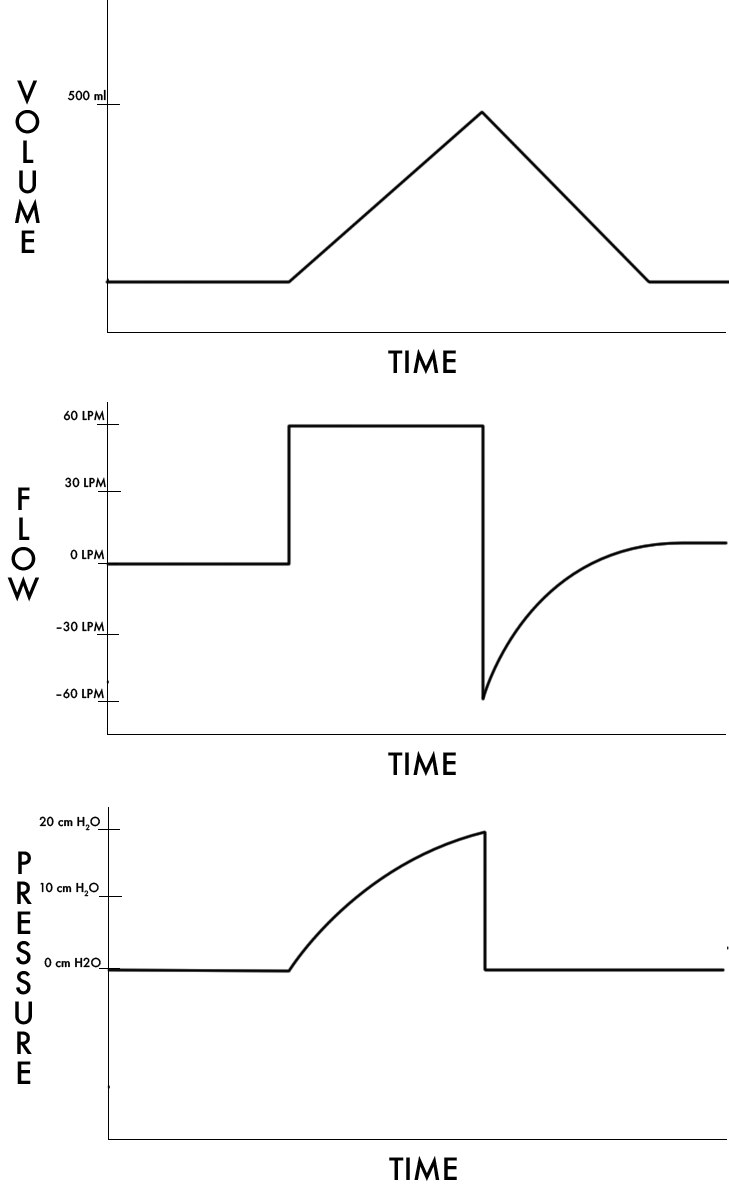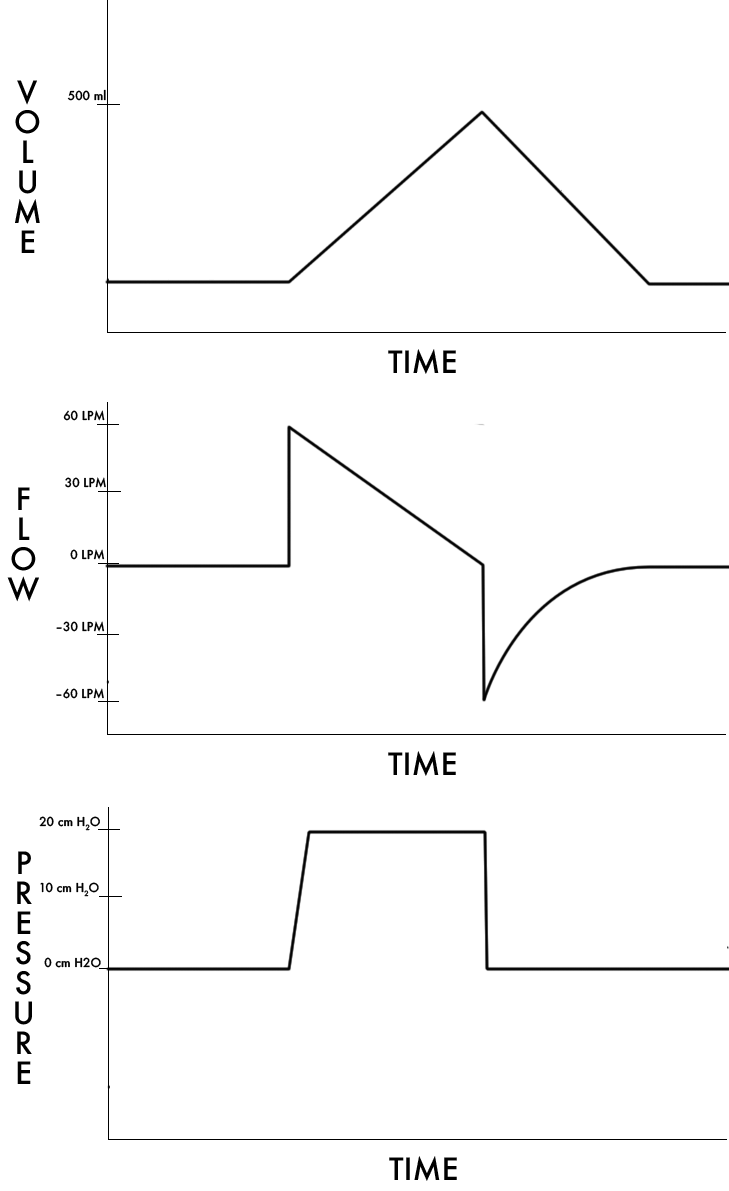Here we discuss the dichotomous cultures of “pressure” versus “volume” ventilator modalities. Read the other entries from this series here: (1), (3), (4), (5), (6)
We mentioned last time the tight relationship between pressure, volume, flow, and time.
Ultimately, flow tends to determine the “shape” of a breath, and time determines its duration. It is pressure and volume, however, that determine its size.
How much air do you get with each breath? This is a vital question for reaching many of our physiological goals in critical care, including acid-base balance, lung protection, and oxygenation. With each positive pressure breath, we are simultaneously increasing both the volume of air and the pressure within the patient’s lungs.
Since pressure and volume are directly correlated, we can choose which one we want to dial into the ventilator, and which one will result from that. Either volume will be the independent variable, and pressure will be the dependent variable, or vice versa.
In either case, changing one will affect the other. But it will do so in unpredictable ways. The relationship between volume and pressure is compliance. Low compliance (aka high resistance, a very “tight” lung) means that high pressure is required to squeeze even a small volume into the lungs; this is often due to diseased or shunted lungs (pneumonia, ARDS, pulmonary edema) or extrapulmonary compression (a heavy chest wall or obese abdomen). High compliance (aka low resistance, a very “loose,” flexible lung) means that we can push a large volume into the lungs and only generate a low pressure; this suggests either a very healthy set of lungs or a patient doing most of his own work, by dropping the diaphragm and expanding the chest to make way for lung expansion.
So depending on our preference, we can do one of two things:
- We dial a volume into the ventilator, and a certain pressure results when that volume is delivered (we won’t know how much without checking). This is called a volume mode, volume-type, volume-targeted, or simply volume control ventilation (VCV).
- Or we dial in a pressure, and when that pressure is generated in the airway, a certain volume has been delivered (we won’t know how much without checking). This is called a pressure mode, pressure-type, pressure-targeted, or simply pressure control ventilation (PCV).
Volume and pressure control are, on a basic level, identical. We simply need to decide which number we prefer to fix and which one we’ll have to monitor.
Mostly, this is a matter of culture. Typically, a particular ICU or hospital (or even an entire region) will be a volume or pressure “shop,” with most providers sticking to one flavor of ventilation. If you’re in a PCV unit, and decide to throw a patient on VCV, you will make everybody’s head hurt—since they’re used to setting pressure and checking volumes, not vice versa—without any real benefit. So consistency is best.
More subtly, however, there are other differences between the two approaches, mostly related to flow.
In VCV, flow is a constant variable; we set it on the vent, usually somewhere between 40 and 80 LPM. Once the breath is triggered, air blows into the patient at the set flow rate, until the target volume is reached. Once that happens, the breath ends, and exhalation begins. VCV is therefore both volume-targeted and volume-cycled.

In PCV, however, things are more complex. When the breath begins, the goal is to reach the target pressure, and the vent accomplishes this by manipulating the flow, rapidly increasing it until the set pressure is achieved. Unlike in VCV, flow is not fixed; it is dynamic, varying according to the patient’s compliance, as well as the “rise time” (how quickly you want to ask the vent to reach the target pressure, a topic beyond our scope today).
However, once it hits the set pressure, the breath isn’t over. Instead, it will hold that pressure for a set amount of time. PCV is therefore pressure-targeted but time-cycled.
Since maintaining pressure requires less flow than reaching it, in PCV, flow is initially very high, then tapers off. If the inspiratory time is sufficiently long, flow should reach zero by the end of the breath.

For people who care about such things, the arguments in favor of each mode are as follows:
- Volume control: Easy to work with, since we can directly manipulate tidal volume, which (along with rate) is the main variable that controls minute ventilation and therefore pCO2. It is also the main variable in low tidal volume “lung protective” ventilation as defined by the ARDSnet protocol.
- Pressure control: Arguably more comfortable, since the dynamic flow rate can “match” the patient’s own effort (whereas the flow in VCV, being fixed, may either be slower or faster than the patient prefers). The tapered, “decelerating ramp” of flow afterwards may also allow more time for sluggish lung units to recruit—although it should be noted that many vents can execute VCV with a decelerating ramp as well. Finally, the flip side of the lung-protective ARDSnet coin is minimizing airway pressure, which is easy when we set the peak pressure ourselves.
Mostly, this is a Coke versus Pepsi debate. It behooves the skilled provider to understand both schools of thought.
Next time, we’ll discuss the different methods of triggering a breath.
